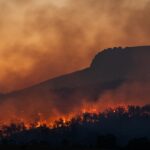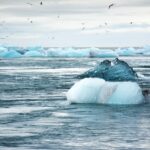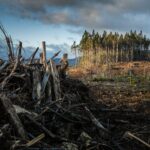Topic: Climate Change and Global Warming
Overview
Climate change is a serious and urgent problem we face these days. You may have heard of the term “climate change” in the media many times. But do you know what it is and how it will affect us? In order to take climate action, you first need to understand the basics. In this lesson, you will learn a number of terms related to climate change as well as the causes and effects of climate change. In the next few lessons, you will learn many other aspects of climate change including the practical solutions that can help protect our planet’s future.
Learning Outcome
When you have completed this lesson you should be able to:
- describe the terms “global warming” and “climate change” and identify at least three threats of climate change to the planet.
Instructions for Completing This Section
- Review glossary on the Environmental Protection Agency website then complete Activity 1 as per given instructions.
- Review the section content on climate change.
- Watch the video presented.
- Complete the three questions under Activity 3.
Activity 1. Basic Climate Change Terms
Look up the definitions of the climate change terms listed in the first column of Table 1 on the Environmental Protection Agency (EPA) website:
Global Climate Change Glossary.
Complete the table below, write the definitions on the second column.
Table 1. Basic Climate Change Terms
| Term | Definition |
| Climate Change | |
| Global Warming | |
| Greenhouse Gases | |
| Greenhouse Effect | |
| Methane |
2. What is climate change?
Climate change describes a long term shift in the Earth’s climate including temperatures and weather patterns such as rainfall and snowfall.
Earth’s climate has never been static; it changes over long periods of time, moving in and out of ice ages and warmer periods. However, the pace of change in recent decades has been dramatically accelerating, causing worldwide concern. If we do not take steps to do something about it now, the detrimental effects on earth could be irreversible.
What is global warming?
Although the terms “climate change” and “global warming” are often used interchangeably, there is a subtle difference between two the terms. Global warming is the overall phenomenon whereby global average temperatures are slowly increasing. Climate change is the result of global warming. That is, as global temperatures increase, climatic conditions change in various ways.
Why is climate change happening?
There are various reasons for the rising Earth’s temperature, for example, greenhouse gases emanating from carbon dioxide (CO2) emissions, burning of fossil fuels, cutting down trees and destroying wetlands. The Earth gets heat from the sun. In the atmosphere, greenhouse gases like carbon dioxide trap this heat and keep it from escaping back to outer space. As carbon dioxide and other greenhouse gases build up in the atmosphere, they trap more of the heat that radiates from Earth’s surface as it absorbs sunlight. All this extra carbon dioxide is trapping more heat in the atmosphere, leading to substantial increase in temperature making and causing other climate changes, too.
What are the impacts of a changing climate?
The signs of climate change are all around us. You have no doubt seen many negative effects of climate change reported in the news by now, for example, extreme weather events, devastating flooding, widespread wildfires, and powerful tornadoes.
Climate change affects our wellbeing and the health of our planet. It is causing severe and widespread disruption and affecting the lives of billions of people around the world. Below are some examples of effects of climate change:
Heat waves – heat waves are a natural part of weather variation. However, they are expected to occur more frequently as the result of rising Earth temperature. This can lead to more heat-related illnesses and deaths.
Heavy precipitation and storms – heavy precipitation, such as rain or snow, is becoming more common in many areas. These changes can lead to droughts and fires in some areas, and flooding in other areas.
Sea level rise – the sea levels are constantly rising because glaciers and ice sheets are melting and seas are warming. Rising waters can threatening to inundate small-island nations, low-lying cities, low-lying, erodes shorelines as well as flooding and loss of many marshes and wetlands.
Threats to habitats and animals – wildlife can not survive without a healthy habitat. The effects of changing climate such as extreme temperatures, rising sea levels, flood can threaten the habitat of many plants and animals. Animal populations are gradually vanishing and may even extinct as there has been a widespread loss of their habitat.
Ocean acidification – extra carbon dioxide in the atmosphere is absorbed by the oceans, making them more acidic. This can have negative overall effects on many marine species, alter marine food chains and food supply to humans.
Wildfires – uncontrolled wildfires can be deadly, destroying homes, and wildlife habitat, and increasing carbon dioxide levels in the atmosphere. In addition, ashes destroy much of the nutrients and erode the soil, causing flooding and landslides.
Drought – a drought is a period with little rain and not enough water. If the planet keeps getting warmer, we can expect more droughts in some places which will make it harder to grow food.
Activity 2: Video
Watch this video Climate Change from a Kid’s Perspective (CBC Kids News, 2019).
Activity 3: Complete the Following three Questions
In the video, Campbell Baron talks about the science of climate change and how it might affect Canadian kids. Having watched the video, please answer the following three questions:
- Does the term “climate change” mean the same thing as the term “global warming”? Please explain your answer.
- Why do you think climate change is happening? Is it too late to do something about it?
- Draw a diagram to show the cumulative effect generated by a rise in global temperature based on the video you watched.
References and Resources
CBC, 2019. Climate change from a kid’s perspective I CBC Kids News – YouTube
Center for Climate and Energy Solutions. Climate basics for kids.
David Suzuki Foundation. What is climate change?
U.S. Environmental Protection Agency (EPA). Climate change glossary. https://archive.epa.gov/climatechange/kids/glossary.html
U.S. Environmental Protection Agency. Climate Change Basics.
(778) Climate Change Basics (OLD) – YouTube




Leave a Reply
You must be logged in to post a comment.